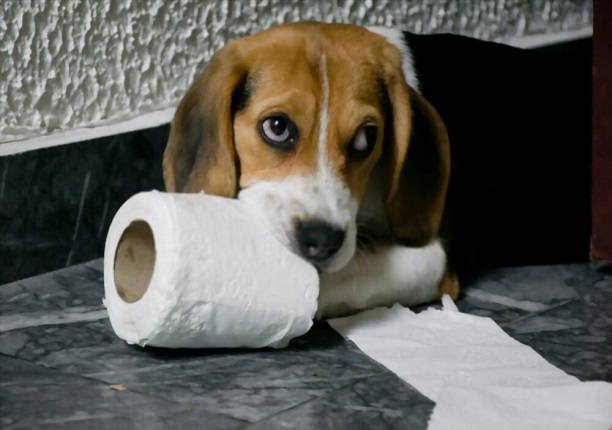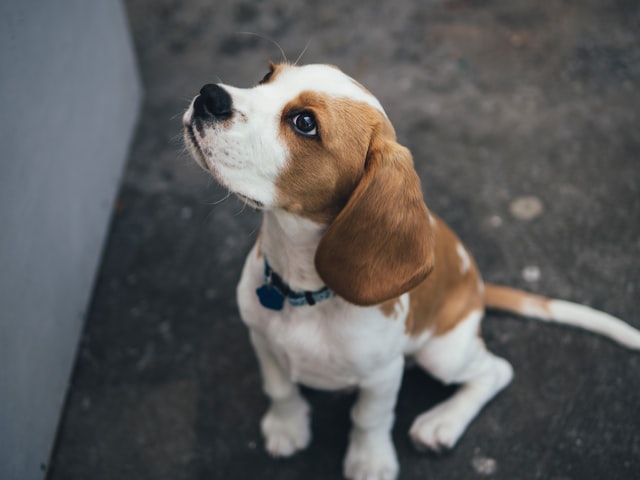Potty-training your Beagle can be one of the most difficult, yet fulfilling, sorts of experience that you and your pet will do together.
There are some critical points that need to be kept in mind as well as prepped for, in order to successfully housetrain your Beagle in a clear, efficient and understandable manner.
The following are the five steps that you should follow to ensure that your Beagle is successfully trained.
1. Selecting a Toilet Spot
A significant blunder that pet owners make is simply unlocking the back entrance and letting their Beagle go ‘just about anywhere’ so long as it is outdoors. Nevertheless, having a Beagle pee or excrete in an area that he just happens to be around does not certify as genuine training.
For some real success, you will need to carefully select an exclusive toilet spot. This must be a place that is 24/7 available regardless of the weather condition, and not near any areas that are regularly used by the family members for instance, a kid’s swing-set or an area used for barbecuing.
2. A Reliable Form of Restrain
An unconfined Beagle pup inside your home will urinate and excrete in every edge of every room and more than likely on the floor covering, on your shoes, behind the couch, under the dinner table, and the list goes on.
So, up until your Beagle is one 100% completely trained, it will be better to limit the mess to a specific area when it is not possible for you to keep an eye on your puppy. How you wish to approach this depends on your Beagle’s age and if he has had any former training. The options are many though.
Gates – Baby gates can be utilized to block off locations of your house or restrict a Beagle puppy to a specific area of your house. This can be an excellent solution when you are not home; nevertheless, do remember that limiting a Beagle’s access to a tiny space will result in absolute chaos and mess over that entire area. If you have a small exposed space, or you gate-off an area of a room or a section of the inside of your house, using a gate is the most practical option if nobody is around to keep an eye on your dog.
Indoor hutches – Mobile, interior dog hutches are a fantastic choice. These are small wooden houses or a tiny door built on them for the dog to live inside. There are a few kinds that can be broadened as a puppy grows. Hutches are also an extremely efficient method to keep your Beagle secure, comfy, and along with all his toys in clear reach, while you are far from the house.
Considering that a hutch is a well-enclosed and organized space, and the bed, toys, water pot, and food will be using up most of its area, any remaining spots should be covered up with pads.
Dogs hardly ever soil their own valuables, so the pee and excretion will likely end up on the pads.
3. Something for Supervision
When you are home and free enough to keep an eye on your Beagle, it should be taken seriously. Beagles love to roam around because of their strong sense of smell. By the time you return from that kitchen and finish cooking your meal, your dog may have ended up in another neighborhood.
Every single time your puppy urinates or excretes, it’s an opportunity to program its brain. Since we are housetraining, we want the dog to relieve itself at a specific spot. That spot is what you must have chosen, as it is the first step of potty-training.
The point of supervision is to train your Beagle to understand that it’s not supposed to follow random smells and roam around the neighborhood, especially when you are potty-training it, there are more chances for the dog to relieve itself wherever it goes outside than the spot you selected. So, strict supervision is critical. A good idea would be to keep your dog tethered with you in some way.
There are two ways of achieving this:
1. A harness. It fits around the body of the dog and is of a specific length. Some harnesses are also stretchable. So, if your dog starts to wander around, you will feel the pressure of the rope in your hands. In addition, the elasticity allows the dog to move with freedom but not go out too far.
2. A very long leash. We’re not talking about a 1-2 ft leash here but rather something thrice the length. It depends on how far you’d want your dog to wander. Some are even 30+ ft long and in these cases, the dog is kept on a large yard with its hutch within the range.
4. Exclusive Signal Words and Phrases
You may not have given much thought to what you’re going to say when you housetrain your Beagle. Or, it could be that you have already begun and simply say whatever comes in your mind. The important part is, the commands you say to your dog will have a tremendous impact on the speed at which it learns.
Dogs are quite clever and do great when they can link words or expressions to actions. For that reason, if you say a different statement each time for the same action, or if another relative of yours starts using their own terminology, it can really confuse up the dog as to which words to associate with the action and who’s the actual authority.
For this reason, you should select which command words will be used to tell the Beagle to go outside to the bathroom, or inside, wherever it is. The more the same command words are repeated, the stronger the link between the words and the particular action, in this case, to go pee or poo at a specific location of your choice, would become.
The words that you use ought to be those that you don’t feel hesitant about when saying them in public or front of others, and everybody who looks after your Beagle would also have to say the same words or the dog won’t understand what is wanted from it.
Some typical commands words for housetraining include ‘Go Toilet’ and ‘Go Potty’. You will notice that these are very short statements and of the kind that you would not usually use when you go out with your dog for a walk or something. The point is, the simpler, the better.
5. Rewards for Obedience
While your appreciation does contribute to potty-training, dogs are able to learn much quicker when they have the maximum motivation to carry out the required activities. The fastest, most reliable approach of making it exceptionally clear that a specific activity is the wanted activity is to reward it within 3-5 seconds after it was completed.




